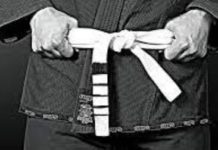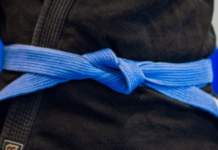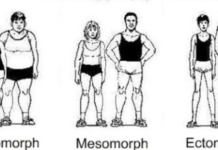BJJOne of the most important questions when thinking about competing in Brazilian Jiu Jitsu is in what weight division you will be. There a lot of them, because tournaments are run by several different BJJ organizations and all of them can have slightly different rules and weight categories. Sometimes it might be confusing and causes you unnecessary stress. That’s why in this article you will find an explanation of BJJ weight classes proposed by major organizations in the Brazilian Jiu Jitsu world.
BJJ weight class general informations
Most of the time you need to know your weight division already at the moment of registering for a competition. Your weight will usually be checked the same day as the tournament, mostly before the first fight. Generally, in Gi championships, your weight will be checked with the Gi. In No Gi tournaments weighting will be just in clothes in which you will be competing like rashguard, leggings, etc. Unfortunately, these general rules do not apply to all tournaments the same. It may differ slightly depending on the BJJ organization.
IBJJF weight Classes
International Brazilian Jiu-Jitsu Federation is an organization that runes several of the biggest BJJ tournaments in the world. IBJJF championship list is the longest of all other federations and includes events such as Pan Ams, European or World Championships. IBJJF weight classes are divided according to gender and age into as many as 9 categories (rooster, light feather, feather, light, middle, middle heavy, heavy, super heavy, ultra-heavy). Below is the list of what BJJ weight classes look like in general when it comes to IBJJF standards.
Adults/Masters Gi – male
| Weight class | Maximum weight |
| Rooster | 57.5 kg (127 lbs) |
| Light-Feather | 64 kg (141.5 lbs) |
| Feather | 70 kg (154.5 lbs) |
| Light | 76 kg (168 lbs) |
| Middle | 82.3 kg (181.5 lbs) |
| Middle Heavy | 88.3 kg (195 lbs) |
| Heavy | 94.3 kg (208 lbs) |
| Super Heavy | 100.5 kg (222 lbs) |
| Ultra-Heavy | No maximum |
Adults/Masters No Gi – male
| Weight Class | Maximum weight |
| Rooster | 55.5 kg (122.5 lbs) |
| Light-Feather | 61.5 kg (136 lbs) |
| Feather | 67.5 kg (149 lbs) |
| Light | 73.5 kg (162.5 lbs) |
| Middle | 79.5 kg (175.5 lbs) |
| Middle Heavy | 85.5 kg (188.5 lbs) |
| Heavy | 91.5 kg (202 lbs) |
| Super Heavy | 97.5 kg (215 lbs) |
| Ultra-Heavy | No maximum |
Adults/Masters Gi – female
| Weight class | Maximum weight |
| Rooster | 48.5 kg (107 lbs) |
| Light-Feather | 53.5 kg (118 lbs) |
| Feather | 58.5 kg (129 lbs) |
| Light | 64 kg (141.5 lbs) |
| Middle | 69 kg (152.5 lbs) |
| Middle Heavy | 74 kg (163.5 lbs) |
| Heavy | 79.3 kg (175 lbs) |
| Super Heavy | No maximum |
Adults/Masters No Gi – female
| Weight class | Maximum weight |
| Rooster | 46.5 kg (103 lbs) |
| Light-Feather | 51.5 kg (114 lbs) |
| Feather | 56.5 kg (125 lbs) |
| Light | 61.5 kg (136 lbs) |
| Middle | 66.5 kg (147 lbs) |
| Middle Heavy | 71.5 kg (158 lbs) |
| Heavy | 76.5 kg (169 lbs) |
| Super Heavy | No maximum |
Juvenile* GI – male
| Weight class | Maximum weight |
| Rooster | 53.5 kg (118 lbs) |
| Light-Feather | 58.5 kg (129 lbs) |
| Feather | 64 kg (141.5 lbs) |
| Light | 69 kg (152.5 lbs) |
| Middle | 74 kg (163.5 lbs) |
| Middle Heavy | 79.3 kg (175 lbs) |
| Heavy | 84.3 kg (186 lbs) |
| Super Heavy | 89.3 kg (197 lbs) |
| Ultra-Heavy | No maximum |
Juvenile No Gi – male
| Weight Class | Maximum weight |
| Rooster | 51.5 kg (114 lbs) |
| Light-Feather | 56.5 kg (125 lbs) |
| Feather | 61.5 kg (136 lbs) |
| Light | 66.5 kg (147 lbs) |
| Middle | 71.5 kg (158 lbs) |
| Middle Heavy | 76.5 kg (169lbs) |
| Heavy | 81.5 kg (180lbs) |
| Super Heavy | 86.5 kg (191lbs) |
| Ultra-Heavy | No maximum |
Juvenile Gi – female
| Weight class | Maximum weight |
| Rooster | 44.3 kg (98 lbs) |
| Light-Feather | 48.3 kg (106.5 lbs) |
| Feather | 52.5 kg (116 lbs) |
| Light | 56.5 kg (125 lbs) |
| Middle | 60.5 kg (133.5 lbs) |
| Middle Heavy | 65 kg (143.5 lbs) |
| Heavy | 69 kg (152 lbs) |
| Super Heavy | No maximum |
Juvenile No Gi – female
| Weight class | Maximum weight |
| Rooster | 42.5 kg (94 lbs) |
| Light-Feather | 46.5 kg (103 lbs) |
| Feather | 50.5 kg (111.5 lbs) |
| Light | 54.5 kg (120.5 lbs) |
| Middle | 58.5 kg (129 lbs) |
| Middle Heavy | 62.5 kg (138 lbs) |
| Heavy | 66.5 kg (147 lbs) |
| Super Heavy | No maximum |
* Sometimes juveniles are divided into 2 categories. This year in IBJJF categories there are Juvenile 1 (year of birth 2004) and Juvenile 2 (year of birth 2003) and their weight divisions are slightly different. On the picture below you can find exact BJJ weight classes for 2020 European Jiu Jitsu IBJJF Championship.

Worth remembering: In IBJJF Gi Tournaments before the first fight, your weight will be checked with the Gi. If you don’t make the weight, by IBJJF standards you will be immediately disqualified. You can’t change divisions and they will no give you a refund. In No Gi Championships policy is the same, your weight is just checked without the gi.
ADCC weight Classes
Abu Dhabi Combat Club is the largest submission fighting organization in the world. The organizer of the prestigious ADCC World Submission Fighting Championships. Each year ADCC has qualifiers and open tournaments in many countries around the world. Their weight categories are a bit smaller than IBJJF ones. Below you can check how exactly it looks like.
| Male | Female | |
| ADCC World Championship and ADCC Trials – official weight divisions | – 65.9 kg (- 145.2 lbs)
– 76.9 kg (- 169.5 lbs) – 87.9 kg (- 193.7 lbs) – 98.9 kg (- 218.0 lbs) + 99 kg (+ 220.5 lbs) Absolute Class |
– 60.0 kg (- 132.2 lbs)
+ 60.0 kg (- 132.2 lbs) |
| Weight classes for Team Competition | – 83.0 kg
+ 83.0 kg |
– 60.0 kg
+ 60.0 kg |
National, Open & other ADCC Championships – official weight divisions
| Male weight classes | Adults (+18) | Masters (+35) |
| BEGINNER
Less than 2 years experience and no medals in BJJ, Judo, Sambo, Wrestling (etc.) |
-60.0 kg
-65.0 kg -70.0 kg -76.0 kg -83.0 kg -91.0 kg -100.0 kg +100.0 kg |
-60.0 kg
-65.0 kg -70.0 kg -76.0 kg -83.0 kg -91.0 kg -100.0 kg +100.0 kg |
| INTERMEDIATE
From 2 to 4 years experience. |
-60.0 kg
-65.0 kg -70.0 kg -76.0 kg -83.0 kg -91.0 kg -100.0 kg +100.0 kg |
-60.0 kg
-65.0 kg -70.0 kg -76.0 kg -83.0 kg -91.0 kg -100.0 kg +100.0 kg |
| PROFESSIONAL
More than 5 years of experience. |
-60.0 kg
-65.0 kg -70.0 kg -76.0 kg -83.0 kg -91.0 kg -100.0 kg +100.0 kg |
-60.0 kg
-65.0 kg -70.0 kg -76.0 kg -83.0 kg -91.0 kg -100.0 kg +100.0 kg |
| Female weight classes | Girls Advanced (+18) |
| BEGINNER
Less than 2 years experience and no medals in BJJ, Judo, Sambo, Wrestling (etc.) |
-50.0 kg
-55.0 kg -60.0 kg -65.0 kg -70.0 kg +70.0 kg |
| INTERMEDIATE
From 2 to 4 years of experience. |
-50.0 kg
-55.0 kg -60.0 kg -65.0 kg -70.0 kg +70.0 kg |
| PROFESSIONAL
More than 5 years of experience. |
-50.0 kg
-55.0 kg -60.0 kg -65.0 kg -70.0 kg +70.0 kg |
UAEJJF
United Arab Emirates Jiu Jitsu Federation is the IBJJF’s main competitor. It is providing alternate venues at the highest levels of grappling. The largest event organized by them is the Abu Dhabi World Pro Jiu-Jitsu Cup. Below you can see how exactly their weight divisions look like.
| Males (over 18) | Boys (16-17) | Females ( over 18) | Girls (16-17) |
| -56 kg | -46 kg | -49 kg | -40 kg |
| -62 kg | -50 kg | -55 kg | -44 kg |
| -69 kg | -55 kg | -62 kg | -48 kg |
| -77 kg | -60 kg | -70 kg | -52 kg |
| -85 kg | -66 kg | -90 kg | -57 kg |
| -94 kg | -73 kg | -63 kg | |
| -110 kg | -81 kg | -70 kg | |
| -94 kg | -82 kg |
In conclusion: As you can see BJJ weight classes vary by organization, there is no one universal weight division. However, as you can see categories regardless of the federation changes approximately every 6 to 10 kilos and differences between IBJJF, ADCC, etc. are only around 2 to 3 kilos. So it’s just good to try to be always in the middle. By doing that you may avoid cutting or gaining weight while starting in tournaments hosted by different organizations. Also, always check before competing exact rules of the tournament, because at some championships you have permission for a little too much weight.












